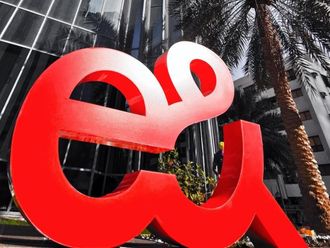
Dubai: Operators' strategies for building next-generation broadband networks in the Middle East will have to be carefully tailored and will need to develop a plan with the right targets, matching their strengths to their long-term ambitions, said top industry experts.
"Operators are being forced to make tough choices, with consumers demanding even greater bandwidth to support new applications and services and a larger variety of access network technology and roll-out options, meaning substantial deployment costs," Mohammad Mourad, Principal with Booz & Company, told Gulf News in an interview.
He said the number of broadband connections is expected to grow at a compound annual growth rate of 56 per cent over the next five years in the Middle East. Countries such as Egypt, Saudi Arabia, Algeria and Syria will see strong growth due to the currently low levels of broadband penetration; broadband growth in countries with high penetration such as the UAE will be primarily driven by the introduction of new applications and value-added services.
According to Julian Herbert, Principal Analyst, Broadband and Internet Markets, Informa Telecoms and Media, broadband prices in the Gulf are relatively high especially Kuwait. Kuwait is the most expensive broadband market in the world. The average broadband prices including Kuwait are five times higher than the EU average of 15 euros (Dh73.66) to 16 euros per month. Excluding Kuwait, it will be at least three times the EU average.
He said the prices are unlikely to come down as the demand is still very high despite high prices while penetration rates are still high. Saudi Arabia is the main market with over 1 million Digital Subscriber Line (DSL) subscribers while Egypt has just passed one million.
"We expect Saudi Arabia and Egypt to double that number in the next 18 months. Contrast to the UAE and Qatar, where both the markets are highly penetrated, growth is expected to be flat. Transfer from DSL to Fiber to the Home (FTTH) is gaining momentum.
"Competition is driving growth in the Gulf markets. Big markets will grow faster in terms of number of lines while in mature markets [UAE, Bahrain, Qatar] the trend is for accelerating growth in mobile broadband and on fixed broadband, the introduction and evolution of sophisticated services [IPTV, TV over broadband and video download over internet etc], " said Herbert.
"One of the emerging trends for the Gulf broadband market this year is the downward pressure on DSL growth due to the increased usage in mobile broadband services, the rollout of FTTH networks in a few markets like UAE, Qatar and Saudi Arabia, and the emergence of alternative operators using WiMax networks in a number of markets," Saeed Irfan, Research Manager, Telecommunications, IDC Middle East, Turkey and Africa, told Gulf News.
IDC forecasts the Gulf fixed broadband market to grow by CAGR of 23 per cent between 2008-2013.
"We're expecting to see faster growth in Oman primarily because the penetration rate is still quite low but also due to the introduction of competition in the fixed market there," Irfan said.
He said operators should be looking at where they want to be in the ICT value chain. We see mobile payments, mobile advertising, IPTV, unified communications as services that will generate some buzz this year. Most of these services have been in operators' product roadmaps for a while but we expect to see a more aggressive push in the market this year.
"The development of content in the region is indeed getting more serious attention from various stakeholders — from government authorities, media companies to operators — and it is happening simultaneously with existing efforts in widening the rollout of higher speed mobile and fixed broadband networks. The key to succeed is how to integrate the value from these different elements and encourage adoption in the market through the right business model and the right partnerships," Irfan said.
While Mourad said the four key trends that will drive telecom markets this year are revival of growth momentum, accelerate innovation in services, harvest broadband potential and transform cost structures.
"International expansion will be an important contributor to growth going forward. This drive has started in the early 2000s and has led to an exponential growth in footprint coverage by operators such as Batelco, etisalat, Orascom, Saudi Telecom, Qtel and Zain.
"Gulf-based incumbent operators have been the most active in this drive, and we saw their footprint grow from covering a mere six countries in 2004 to more than 75 today," Mourad said.
He said the key challenges the operators in the region going to face are saturating fixed and mobile markets; emergence of new breed of disruptive competitors that are dis-intermediating traditional telcos and reaching directly to end-users through appealing applications (e.g. Facebook, Google, etc.); intensifying competition and tit-for-tat price wars and strengthening of cross-border competition; nascent cross-border management capabilities among regional players.
"Today, on average, Middle East operators generate approximately 2-3 per cent of data revenues from value-added services. Through innovation, this contribution is expected to reach the industry benchmark levels of 8-10 per cent in the medium term," Mourad said.












